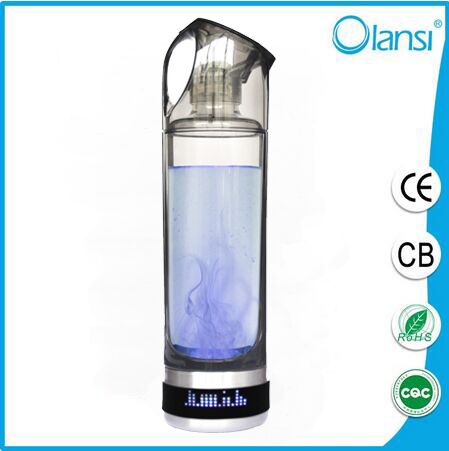The source of hydrogen in the body is not only the intestinal bacteria
1 hydrogen is the main component of intestinal gas. Hydrogen produced by intestinal bacteria fermented food, the bloating or colonic mucosa into the circulatory system and excreted through the respiratory system;
2 hydrogen as an anti-inflammatory biological molecules, showing cardiovascular effects and protective tissue damage;
3 respiratory tract, oral cavity, throat, vagina, skin flora and other non intestinal bacteria can produce hydrogen, these may be mediated by endogenous microorganisms affect host health important medium; 4 microbial source of hydrogen may be used as a selective antioxidant protection in different tissues and organs from free radical toxicity.
4 microbial sources of hydrogen may serve as a selective antioxidant to protect different tissues and organs from free radicals

A lot of studies determined that hydrogen is not an inert gas, and it has a very wide range of biological effects, can be used as anti-inflammatory biological molecules involved in protecting the heart and tissue damage. The biological effects of hydrogen in the past do not understand, it is lack of research on hydrogen molecules from different sources and attention, in fact, hydrogen is not only metabolites in Escherichia coli. Metabolic products may also be various other parts of the bacteria to produce hydrogen. In this paper, the non intestinal bacteria were summarized, in order to cause hydrogen biomedical researchers attention.
As everyone knows, the body not only the existence of a large number of intestinal bacteria, oral cavity, nasal cavity, respiratory tract, skin and genital pores are widely distributed. There are a large number of bacteria of intestinal bacteria, every day can produce up to 15 litres of hydrogen (this data have different versions), non enteric bacteria can also produce a certain amount of hydrogen, such as oral and pharyngeal bacteria has the ability to produce hydrogen. The distribution has the capability to produce hydrogen in the female reproductive system of Clostridium under normal conditions, because the relative number of lactic acid bacteria more, hydrogen production may be limited. Another possible hydrogen site was respiratory tract, here Pseudomonas and Acinetobacter distribution is to produce hydrogen candidates. There are a lot of skin bacteria, normal skin bacteria Corynebacterium, Acinetobacter and Streptococcus has the ability to produce hydrogen. Now we have these parts of bacteria The students still do not understand hydrogen. These sites bacteria produce hydrogen and healthy relationships are worthy of study. Different parts of the bacteria to produce hydrogen may also play a role in the local, affect the host health. Of course these problems still need to be confirmed by research.


